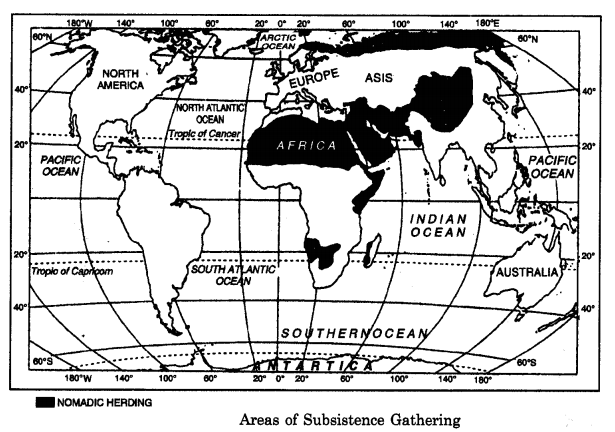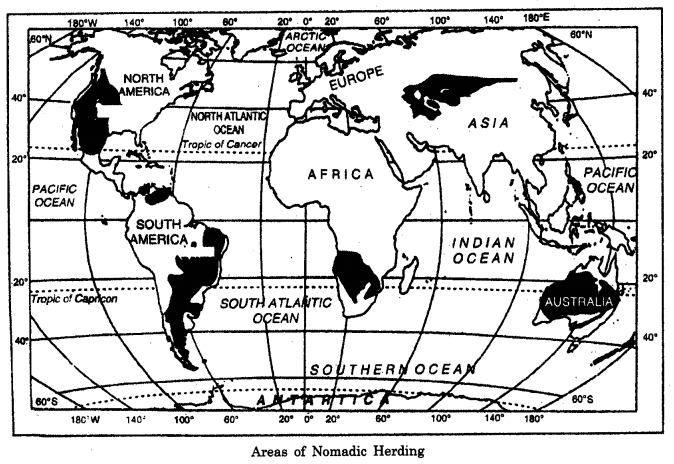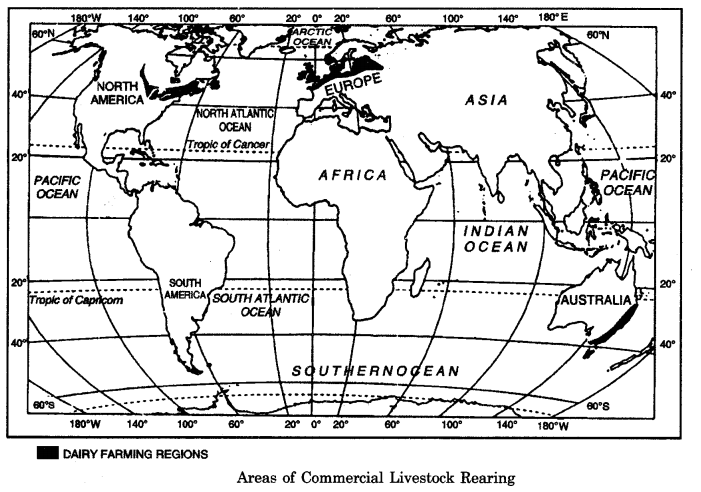Here we are providing 1 Mark Questions for History Class 12 Chapter 12 Colonial Cities: Urbanisation, Planning and Architecture are the best resource for students which helps in class 12 board exams.
One Mark Questions for History Class 12 Chapter 12 Colonial Cities: Urbanisation, Planning and Architecture
Question 1.
Name three Presidency cities established by the British.
Answer:
Bombay, Calcutta and Madras.
Question 2.
Who gave Bombay to the British East India Company in 1661 A.D.?
Answer:
Bombay was given to the company in 1661 A.D. by the English King.
Question 3.
Name the important centres of imperial administration and central during the Mughal Empire.
Answer:
Agra, Delhi and Lahore.
Question 4.
Which south Indian cities were femous for their temples?
Answer:
Madurai and Kanchipuram.
Question 5.
What is Qasbah?
Answer:
Qasbah is a small town in the countryside, often the seat of a local notable.
Question 6.
What is meant by Ganj?
Answer:
Ganj refers to a small fixed market.
Question 7.
When and where did the different Europeans establish their base in India?
Answer:
Portugues in Panaji in 1510, the Dutch in Masulipatnam in 1605, the British in Madras in 1639 and the French in Pondicherry in 1673.
Question 8.
Why did the importance of Surat, Masulipatnam and Dhaka decline during the British period?
Answer:
Due to shifting of trade to other places such as Madras, Bombay and Calcutta. .
Question 9.
How did the British try to raise money for administering towns?
Answer:
Through the systematic annual collection of municipal taxes.
Question 10.
How much was the urban population in India in 1900 and 1940?
Answer:
10 per cent in 1900 and 13 per cent in 1940.
Question 11.
When was railway introduced in India?
Answer:
In 1853 A.D.
Question 12.
Name three cities developed as railway towns. ,
Answer:
Jamalpur, Waltair and Bareilly.
Question 13.
When did the decennial (conducted every ten years) census become a regular feature in India ? Also, tell its importance.
Or
When was the first All India Census attempted ? Mention two of its early aims. (C.B.S.E. 2009 (D))
Answer:
The first All-India census was attempted in the year 1872. However, the decennial census became a regular feature since 1881. This collection of data is an invaluable source to study urbanisation in India.
Question 14.
What factors helped in the establishment of industries in Bombay and Calcutta in the middle of the 19th century ?
Answer:
(i) These cities were linked to the whole country by the expanding network of railways.
(ii) There was an availability of cheap labour. Therefore, it was convenient to set up new factories in these towns.
Question 15.
What were the two important industrial cities of India in the nineteenth century ? What was manufactured there ?
Answer:
In the nineteenth century, there were two main industrial cities, that is, Kanpur and Jamshedpur. Kanpur was famous for leather, woollen and cotton textiles. But Jamshedpur was known for the production of steel.
Question 16.
What were the objectives of early hill- stations ?
Or
How were the hill-stations a distinctive feature of colonial urban development ? Give two reasons. (C.B.S.E. 2010 (D))
Answer:
(i) The initial hill-stations served the needs of the British army.
(ii) They served as places to stay troops, guard frontiers and launch campaigns against enemy rulers.
Question 17.
How important were the hill- stations for colonial economy ?
Or
Why were hill stations important for colonial economy ? Give any two reasons. (C.B.S.E. 2010 (O.D))
Or
Why did the hill stations become an ideal destination for the British and Europians? Give any one’reason. (C.B.S.E. 2014 (O.D.))
Answer:
Hill stations were very important for colonial economy on account of the following reasons:
(i) They had tea and coffee plantations in their vicinity.
(ii) There was an influx of immigrant labour from the plains as these hill-stations provided many opportunities for jobs.
Question 18.
What was the Lottery Committee of Calcutta (1817) ?
Or
Give any two functions of the Lottery Committee in the context of colonial Calcutta (Kolkata). (C.B.S.E. 2008 (O.D.))
Or
Name the region where the lottery committee initiated town planning ‘. during the 18th century. Mention any ‘one feature of it. (C.B.S.E. 2015 (O.D.))
Answer:
The Lottery Committee was set up at Calcutta in 1817 after the departure of Lord Wellesley. It carried on the work of town planning with the help of the government. It was named as the Lottery Committee because it raised funds through public lotteries. However, it used these funds for the improvement of the town.
Question 19.
What did the city of Bombay gain by the opening of Suez Canal in 1869 ?
Answer:
(i) The opening of the Suez Canal strengthened the links of Bombay with the entire world economy.
(ii) It developed Bombay as the most important city of India. In fact, Bombay was declared as the Urbs Prima in India-a Latin phrase, which meant that Bombay was a great city of India.
Question 20.
What is the importance of architecture for students of history ?
Answer:
Architecture helps in giving shape to our ideas with the help of stone, brick, wood or plaster. Social relations and identities are reflected in many ways through the bunglow of the government officers, the palatial house of the rich merchant to the humble hut of the labourer.
Question 21.
Name two buildings each made in Neo-Gothic and Indo-Saracenic styles during colonial period.
Answer:
(i) Neo-Gothic Style : The Secretariat, University of Bombay and High Court.
(ii) Indo-Saracenic Style : Gateway of India, Taj Mahal Hotel.
Question 22.
Name two buildings of Neo-Gothic style and name those Indians who donated money for these buildings.
Answer:
(i) University Hall: Sir Cowas Jee Jehangir Readymoney.
(ii) Rajabai Tower : Premchand Roychand.
Question 23.
Mention any two characteristic features of the “middle classes” in the new colonial cities under the British. (C.B.S.E. 2008 (O.D.))
Answer:
(i) The middle class had an access to new education centres like schools, colleges and libraries.
(ii) As they were educated, they could express their views in newspapers, journals and social gatherings. It helped in the creation of new public environment.
Question 24.
Who were the Dubashes in colonial cities ? Explain one function they performed. (C.B.S.E. 2008 (O.D.))
Answer:
In the colonial cities, the Dubashes were those people who spoke in both the local language and English language. They used to act as agents or traders. They acted as mediators between the British and Indian society. They constructed their houses in traditional way near the markets of the Black Town.
Question 25.
Mention two changes that were seen in the network of trade in the urban centres from the mid 18th century. (C.B.S.E. 2010 (O.D.))
Answer:
(i) Traders migrated from the old Mughal centres to new centres in search of work and patronage.
(ii) Importance of commercial centres like Dhaka, Surat, etc., declined when trade shifted to other places, like Bombay.
Question 26.
Mention two features of the Fort St. George of White Town, where most of the Europeans lived. (C.B.S.E. 2010 (O.D.))
Answer:
(i) The white towns were those parts of the colonial towns where the white people lived. The cantonment areas were also developed at safe places.
(ii) They had wide roads, barracks, churches and parade grounds. Besides, they had big bungalows as well as gardens.
Question 27.
Mention two fears of Conservatives in introducing social changes in the new cities built by the British. (C.B.S.E. 2010 (O.D.))
Answer:
(i) Conservatives feared that the British could destroy their social customs.
(ii) They also feared that the British could convert them to Christians.
Question 28.
Who were Dubashes ? What did they do in Madras (now Chennai) ? (C.B.S.E. 2010 (O.D.))
Answer:
Dubashes were those Indians who knew the local language and English language. They also worked as agents and traders and played the role of mediocres between Indian society and the British.
Question 29.
How was the separation between town and country fluid ? State any two reasons. (C.B.S.E. 2010 (O.D.))
Answer:
(i) Peasants travelled long distances to visit pilgrimage and they went through towns.
(ii) They generally collected in towns at the time of a famine.
Question 30.
Mention two new transport facilities introduced in the new colonial cities and also one important effect of it. (C.B.S.E. 2010 (O.D.))
Answer:
(i) In 1853, railways was introduced, which completely changed the outlook of cities. It connected colonial city with the rest of India.
(ii) New facilities lead to the development of ship industry.
Question 31.
Mentioh two characteristics of Neo-Gotbic style of architecture for publie buildings (C.B.S.E 2010,2o14 (OD))
Answer:
(i) The building constructed in this style had high pitched roofs, pointed arches and extensive decoration.
(ii) This style was adopted in the construction of churches in northern Europe during the medieval period
Question 32.
How did the introduction of .’railway in 1853 bring a change in the ‘ fortunes: of towns ? Mention any two changes. (C.B.S.E. 2010 (D))
Or
Analyse how did the introduction of the railways by the British prone advantageous for the Indians in the late nineteenth century. (C.B.S.E. 2015 (D))
Answer:
(i) The centre of economic activities started to move away from traditional centres because these towns were near to old routes and rivers.
(ii) Each railway station became a centre of collection of raw material and distribution of imported items.
Question 33.
Mention two characteristics of neoclassical style of architecture for public buildings in India during the British period. (C.B.S.E. 2010 (D))
Answer:
(i) First characteristic of it was the construction of geometrical structures fronted with lofty pillars.
(ii) It was delved from a style that was originally typical of buildings in ancient Rome. It was considered particularly appropriate for the British Empire in India.
Question 34.
Mention the significance of census operation undertaken by the British in India. (C.B.S.E. 2011 (D))
Answer:
Census data helped the British to undertake development works in new cities. This census data was also a valuable source to study the development of urbanisation in India.
Question 35.
Why did paupers from rural areas flock to the cities ? Mention any two reasons. (C.B.S.E. 2011 (O.D.))
Answer:
(i) Paupers from rural areas flocked to the cities in the hope of employment.
(ii) Some saw cities as places of opportunity, others were attracted by the allure of a different way of life.
Question 36.
Why were Kanpur and Jamshedpur known . as prosper “Industrial Cities” ? (Give any two reasons. (C.B.S.E. 2012 (O.D.))
Answer:
Kanpur and Jamshedpur were known as prosper industrial cities, because:
(i) Kanpur was specialised in the production of leather, woollen and cotton textiles.-
(ii) Jamshedpur was specialised in steel production.


